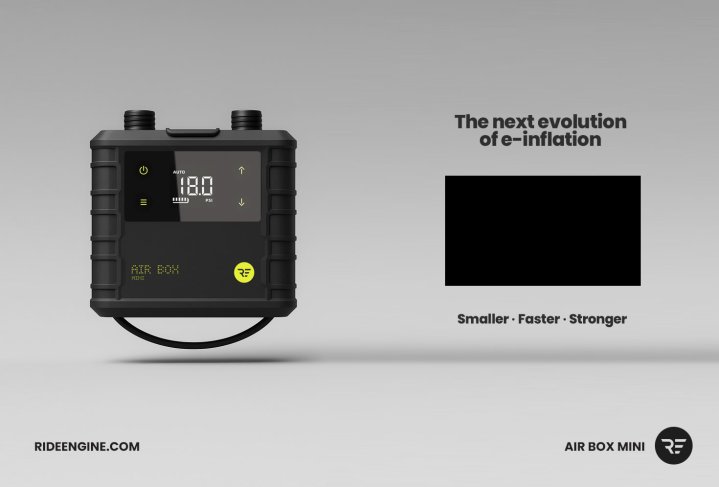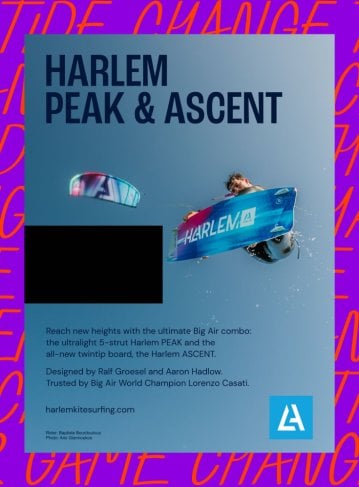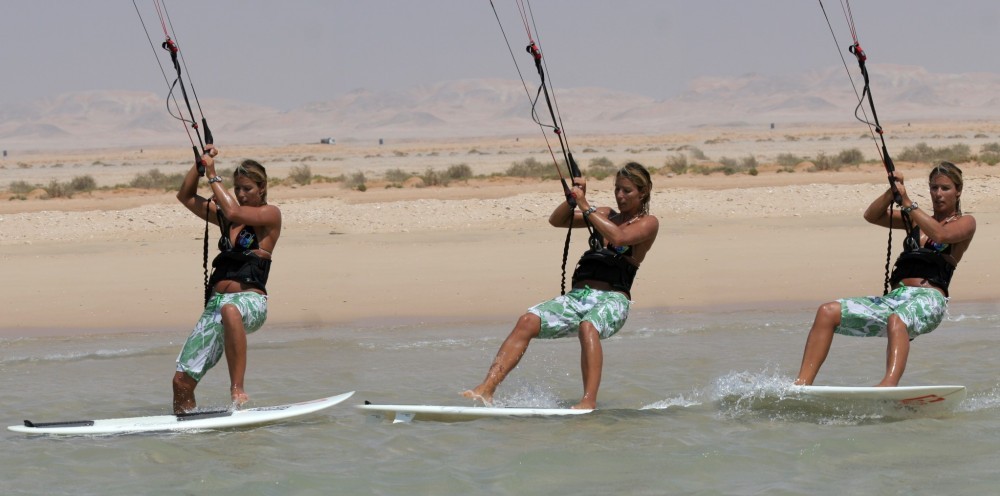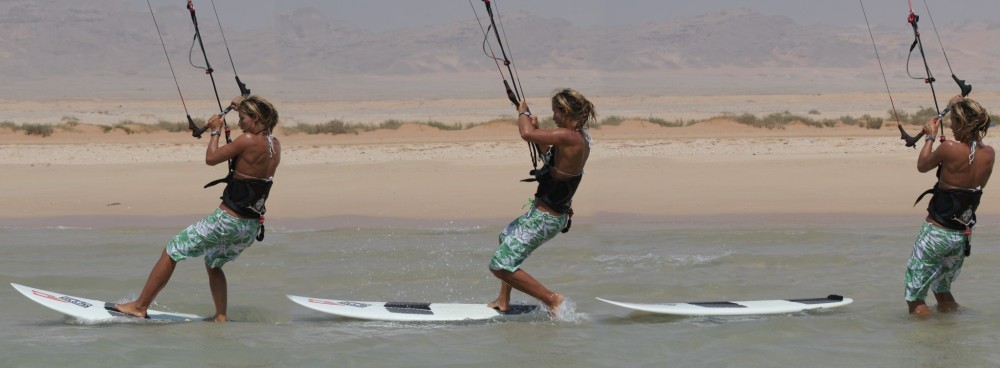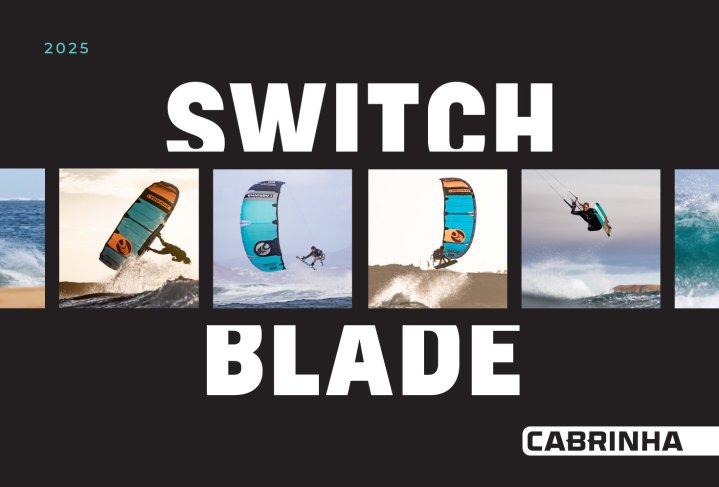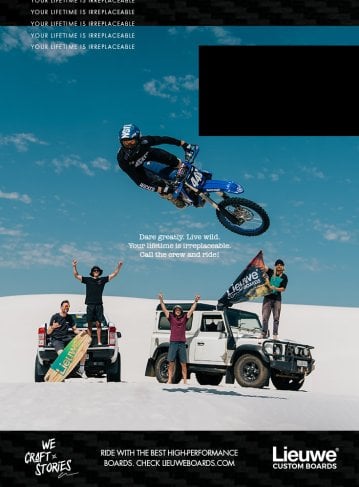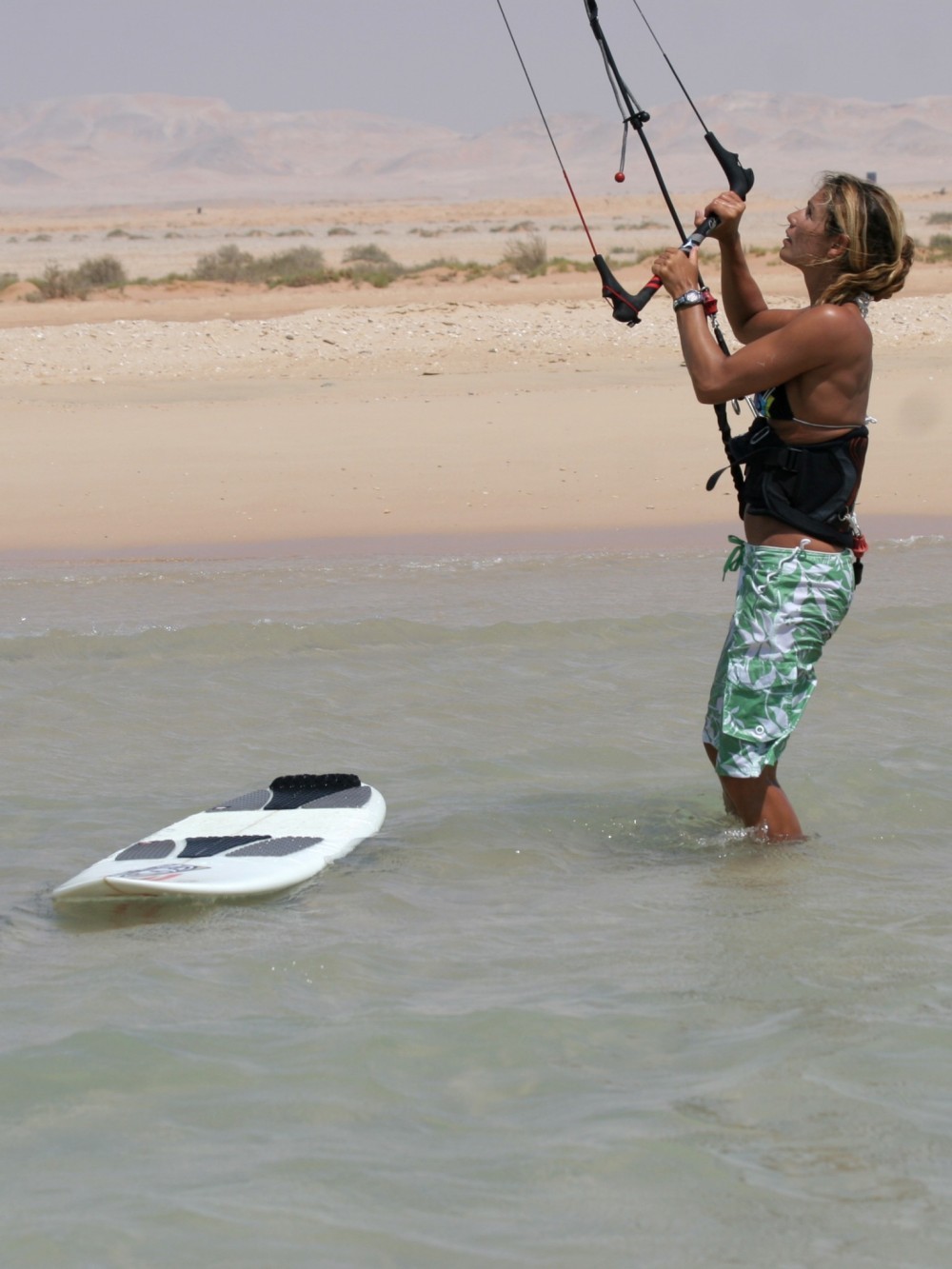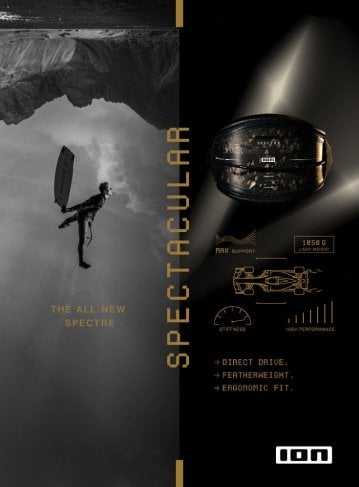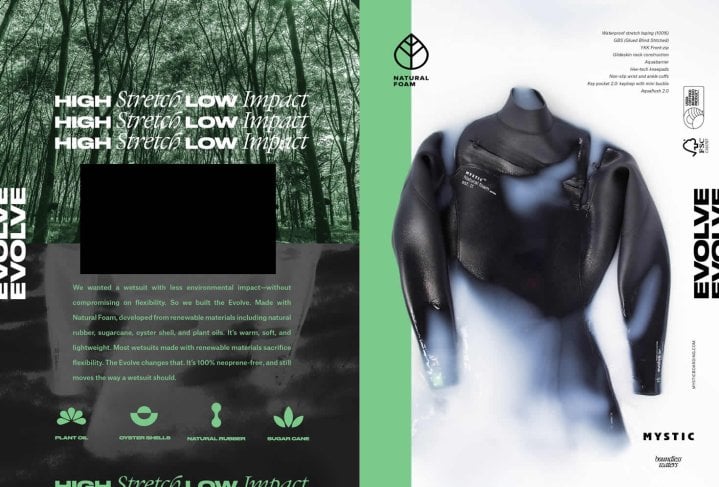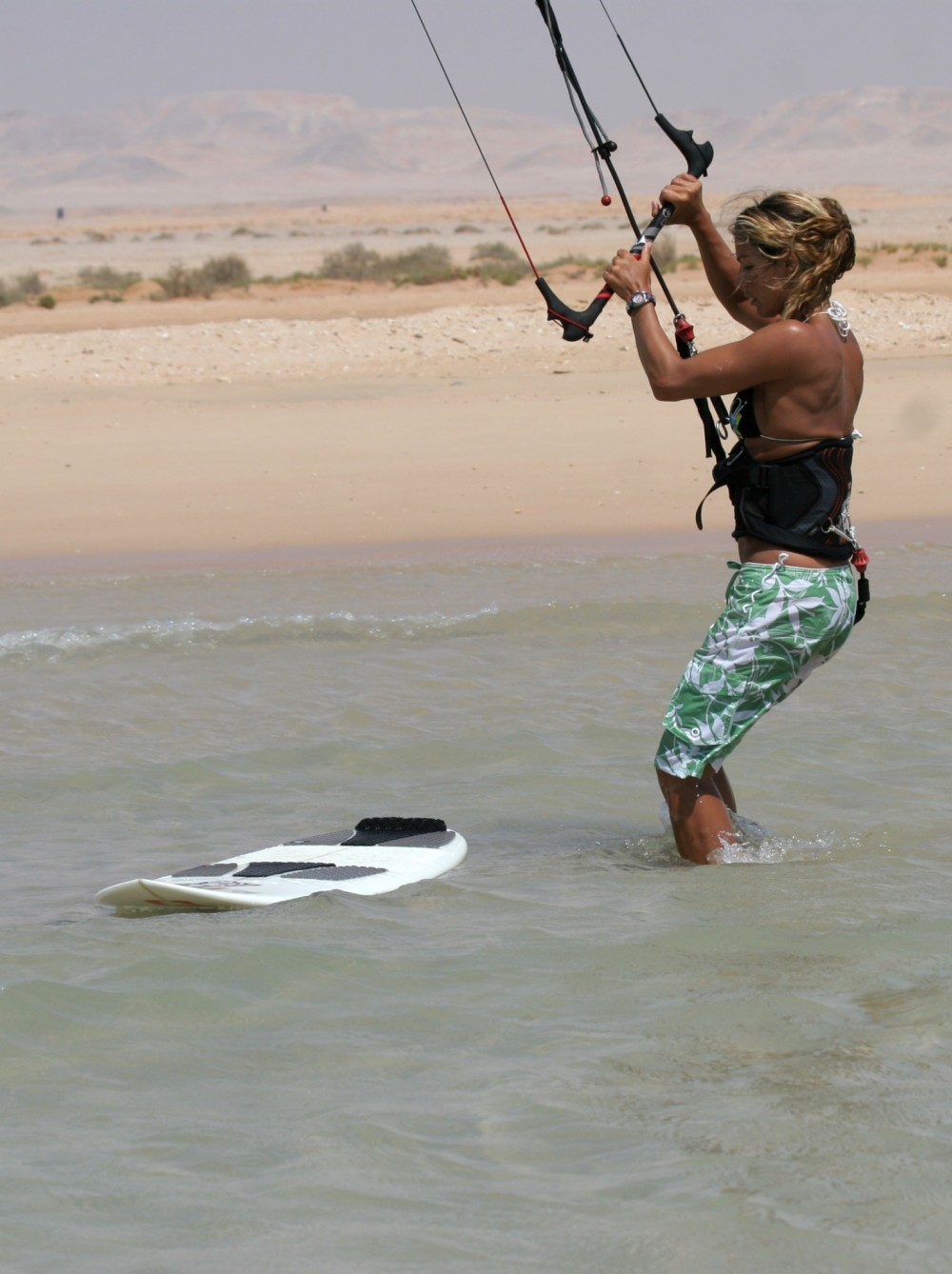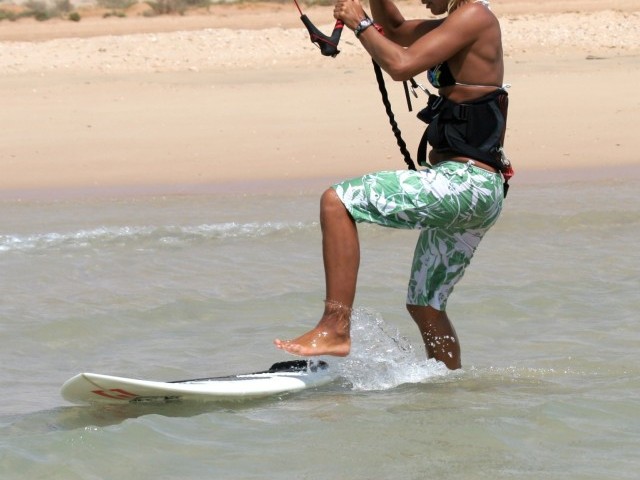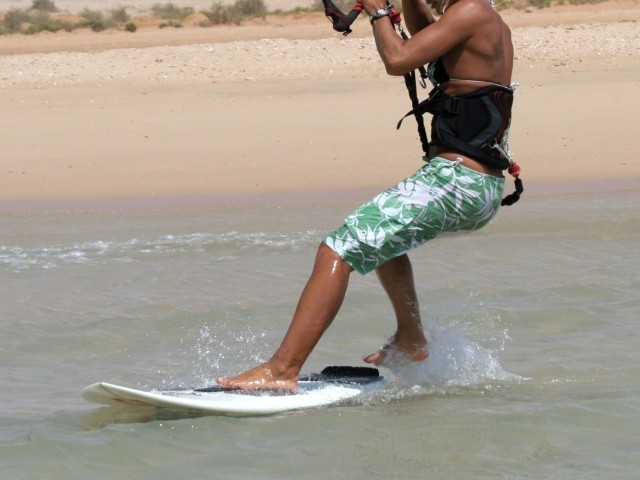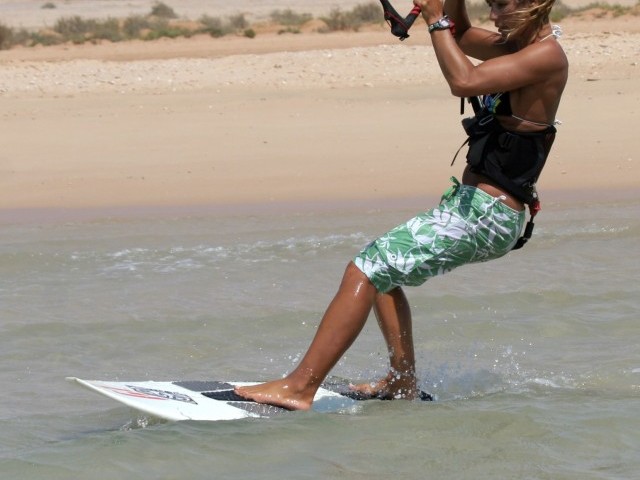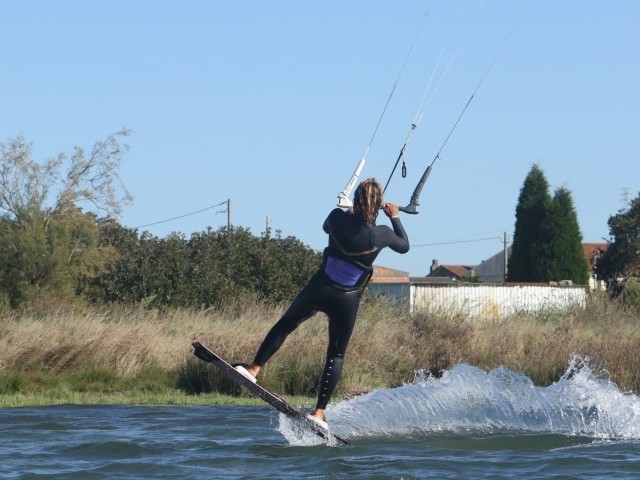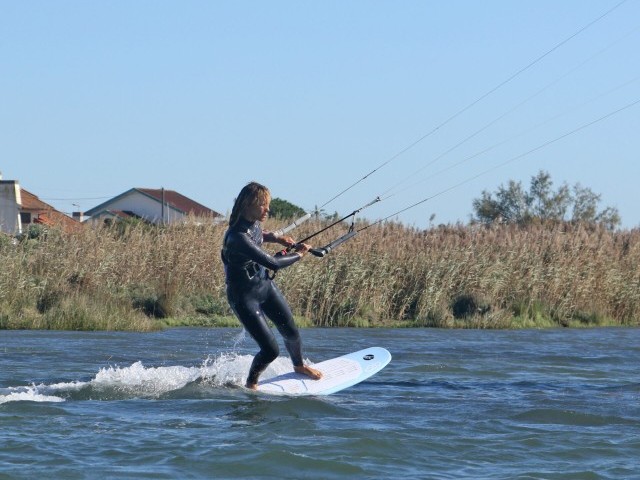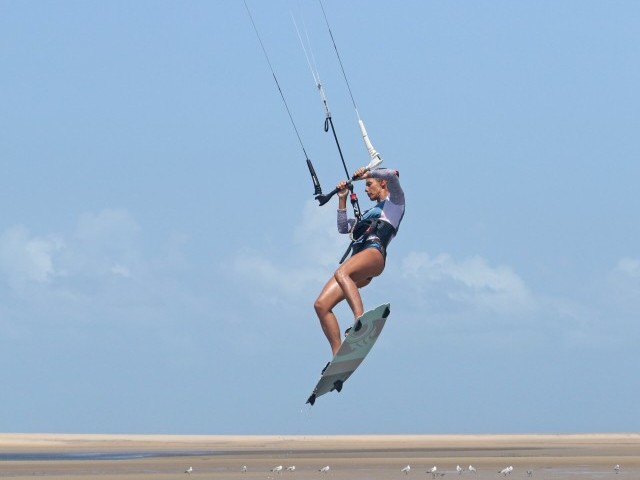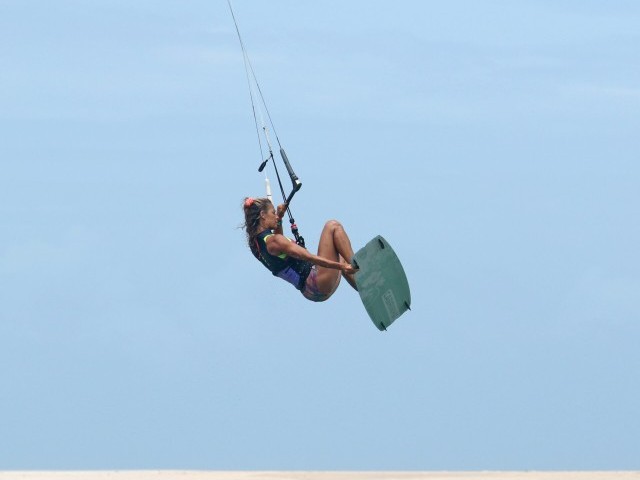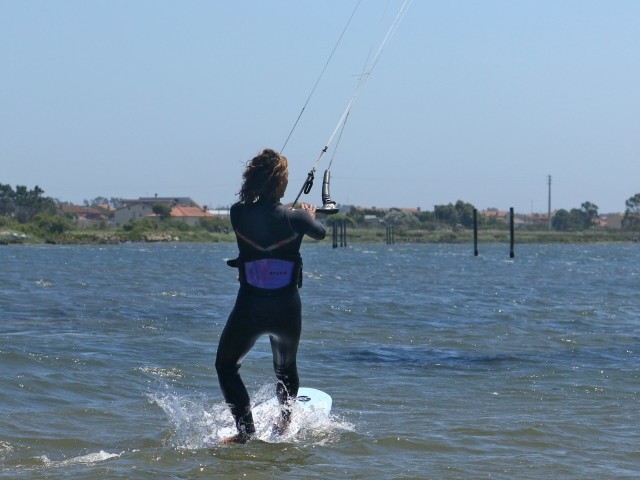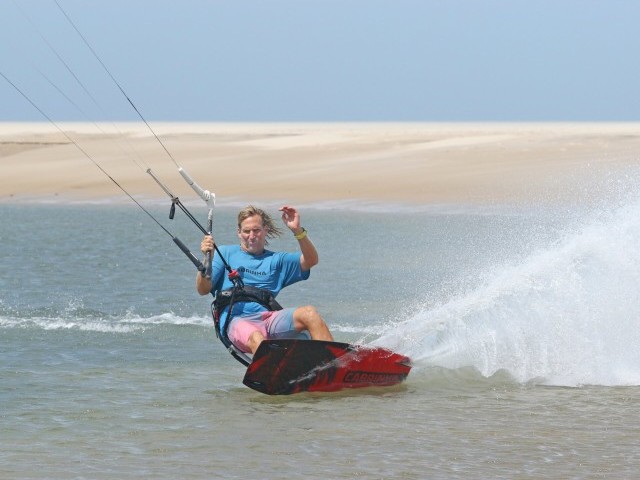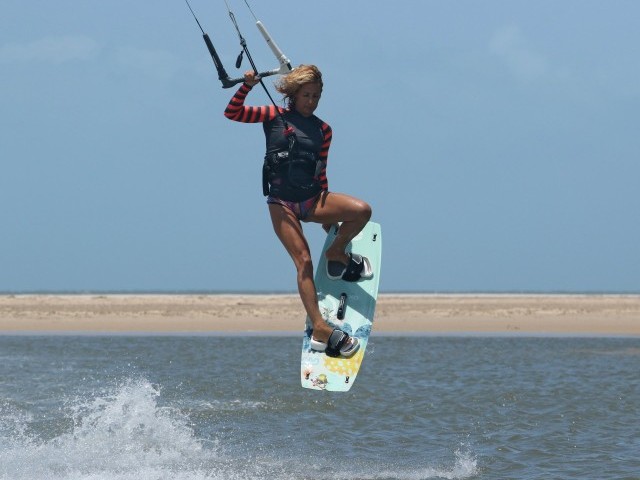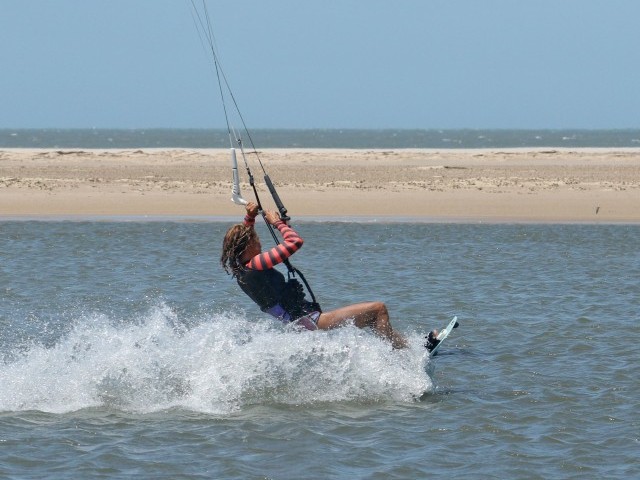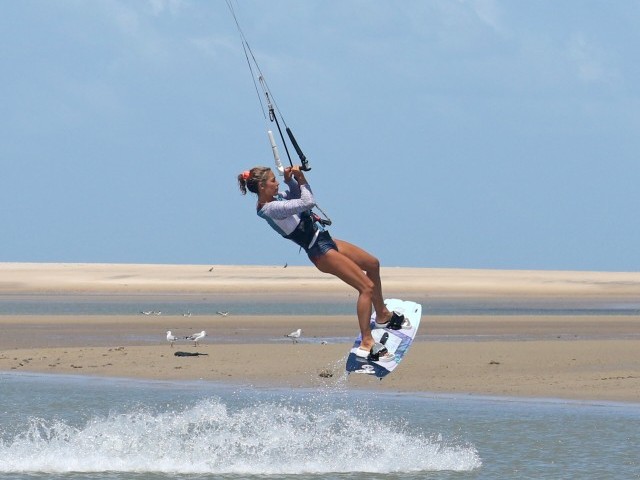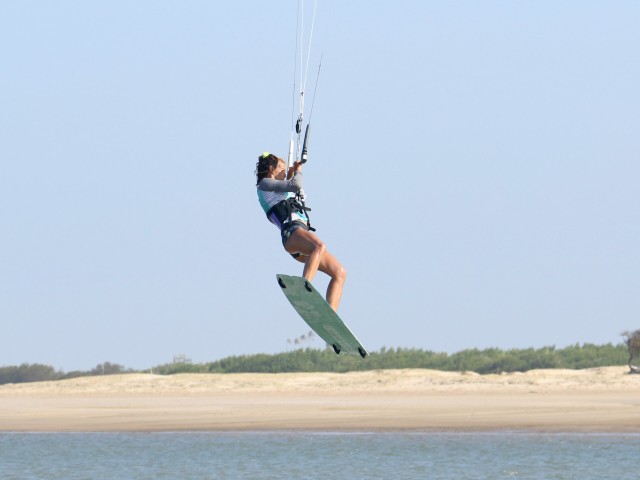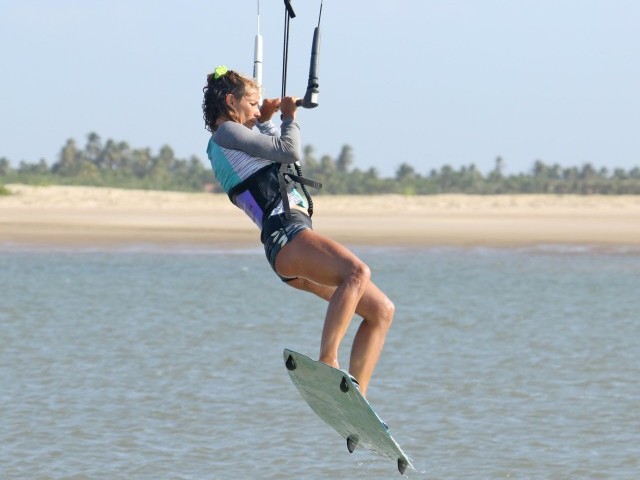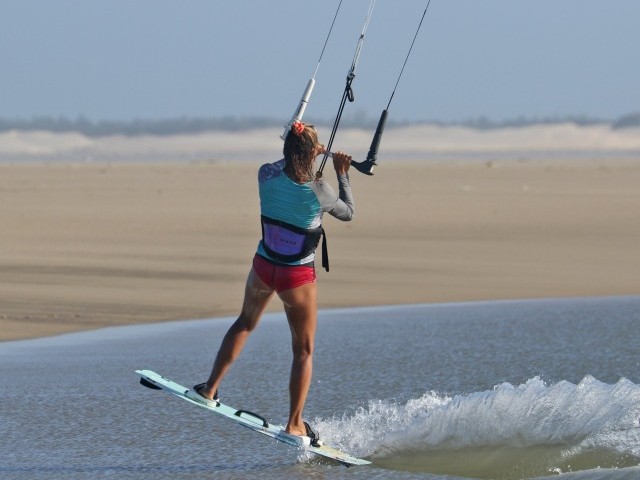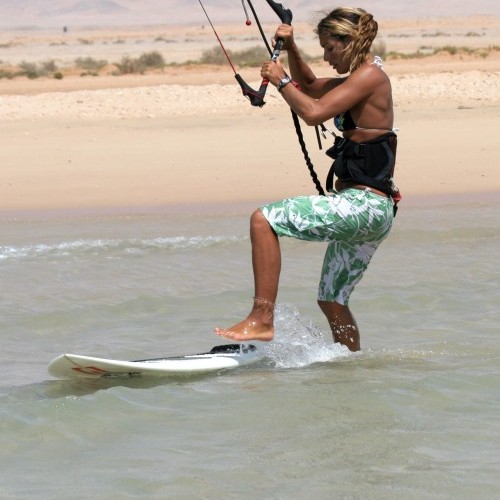
Strapless Beach Start
Technique / Beginner
Introduction
Continuing on from last issue’s strapless fest you’re probably more than ready for this. The beach start is a useful tool as it means that not only can you delay the inevitable dunking, but you can also get off the beach quickly, which is a godsend when the waves are pumping. Water starting is all good and well but if you’ve got a break in the waves you want minimum faffing and maximum speed to get out back before the next set comes through.
As with all things surfboard if you get or can conjure the opportunity to practice this in flat water you’ll potentially master it a tad more quickly. The main issue with wavy conditions is that the board will move around a lot in the current, making it tricky to time your leap of faith onto it’s deck with the surge of power you’ll be putting into the kite.
You’ll need to consider wind direction. Cross-shore will give you plenty of space as long as you’re not standing on the edge of the continental shelf. This way you can walk out far enough to protect your precious fins, safe in the knowledge that the water will at the very least stay the same depth and most likely get deeper once you’re on board. If the wind is very on shore you’d be wise and prudent to go that bit deeper, so that when you start off you don’t run up the beach. As a rule of thumb, start off about knee deep. As you progress you can sneak into the shallows but at this time we waver all responsibility for any lost or damaged fins!
Now rather than look at a pretty sequence we’ll break this down into each separate step, so we’ll go picture by picture. We’re looking across the wind at Karine and she has placed the board on the water across the wind. Best bet if you need to manoeuvre the board is to hold it by the tail.
Pic A. First things first! Karine moves the kite back towards 1 o’clock. This way when she wants to get on the board the kite will lift her slightly as it goes overhead as well as driving her forward. You can see that the board has drifted away from Karine and therefore she is not standing right next to it. This is a good thing as when she moves the kite it will pull her downwind onto the board. If the board is too close she’ll step/jump straight over it. In real time Karine has actually started to steer the kite forwards. She is watching it and once she sees it turn and move she’ll avert her attention to the board.
Pic B. Now that the kite has turned Karine pulls hard on her front hand and looks at the board. You will need enough power to ride away so a decent dive of the kite is required. She will step on front foot first, so she is focusing on where she wants her front foot to go, the front footpad. Karine has dropped her weight by bending her knees so that she doesn’t get pulled forwards to easily.
Pic C. As the kite pulls Karine up and forward she lifts her front leg and stretches it towards the footpad. Knowing that the kite will pull her forward Karine will then hop forward off her back leg, as if she were taking a hopped step over a puddle. The idea is to land with a modicum of forward momentum so that the board starts to move. If Karine were to step onto the board and then dive the kite, the board would not move and she’d be pulled over it.
Pic D. The kite is now diving through the power. Karine lands with her front leg extended which pushes the board’s nose off the wind, and encourages the board to accelerate. Karine also makes sure that her foot lands on the upwind side of the board. This way the nose of the board can slide off the wind. If the weight is on the downwind side of the board, the rail will dig in and the board will submarine. If Karine landed with her body and weight above her foot, the power would pull her over the board. By looking down at her front foot Karine keeps her head and therefore her entire body low, which transfers all the power from the kite into forward momentum on the board. Note how Karine has the bar pulled in. It can be tempting to let the power off by letting the bar out. However if you do the board will stop and once again (repetition is the key) you’ll get pulled over the board.
Pic E. Karine aims to get her back foot near the tail of the board and also on the upwind side of the board. This way she can lean back against the power of the kite and also get the board slightly onto an edge. In this position she can take any excess power from the diving kite by pushing away with her back foot as well. If she only pushes against her front foot, Karine is likely to fall off the back of the board. From here Karine can get comfortable, ride out of the beach start and then change her body and foot position should she need. For example she may wish to move her back foot up slightly to ride upwind.
Taking it into Real Wave Conditions
If the waves are rolling in it can become challenging once the current grabs the fins and turns your board either upwind or downwind. However fear not, a simple adjustment of landing gear and you’ll have no issues. Both these solutions may take some practice but they will stand you in good stead for real wave board conditions.
If the tail of your board moves away from you as in Sequence 1, make sure that you get your front foot on further forward and that you sink the upwind rail by getting your weight right over it. This way your momentum will push the nose of the board off the wind easily, as the fins will offer some resistance. Any past or present windsurfers amongst you will recognise this classic bearing away position, just minus a mastfoot!
If the tail of the board comes towards you or the nose of the board blows away from you, you’ll be wanting the board to turn up into the wind as soon as you land on it. In this scenario, as in Sequence 2, you’ll want to land back foot first on the tail. With the tail digging into the water the nose of the board will swing up into the wind, allowing you to get both feet on the board, whilst keeping it in between you and the kite.
Common Problems
Without a shadow of doubt, the most common error is to stand too close to the board and try to place one foot on it before moving the kite and trying to step the second foot on. This is multitasking at its most complex, Sir Clive Woodward would be proud. Hopping on one leg in the sea, trying to stop your board from moving with your toes, whilst looking up at your kite and steering it one way and then another, all without loosing your balance. Best to think of it as a little jump forward onto the board, nothing too rad, but definitely not pedestrian!
Keystones
- Stand away from the board.
- Kite back to either 1 or 11.
- Dive with gusto.
- Hop Forward.
- Look where you want you front foot to go.
This technique article was in Issue 23 of IKSURFMAG.
Related
By Christian and Karine
Christian and Karine have been working together as a coaching team, running improver to advanced kitesurfing clinics since 2003.




